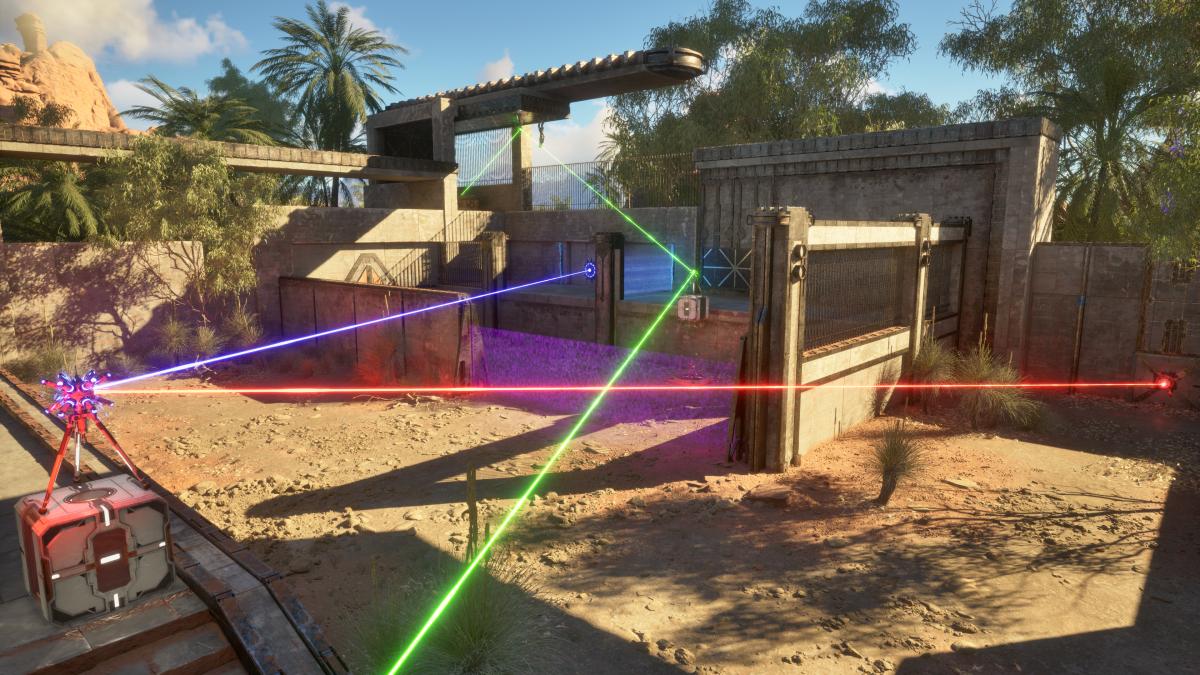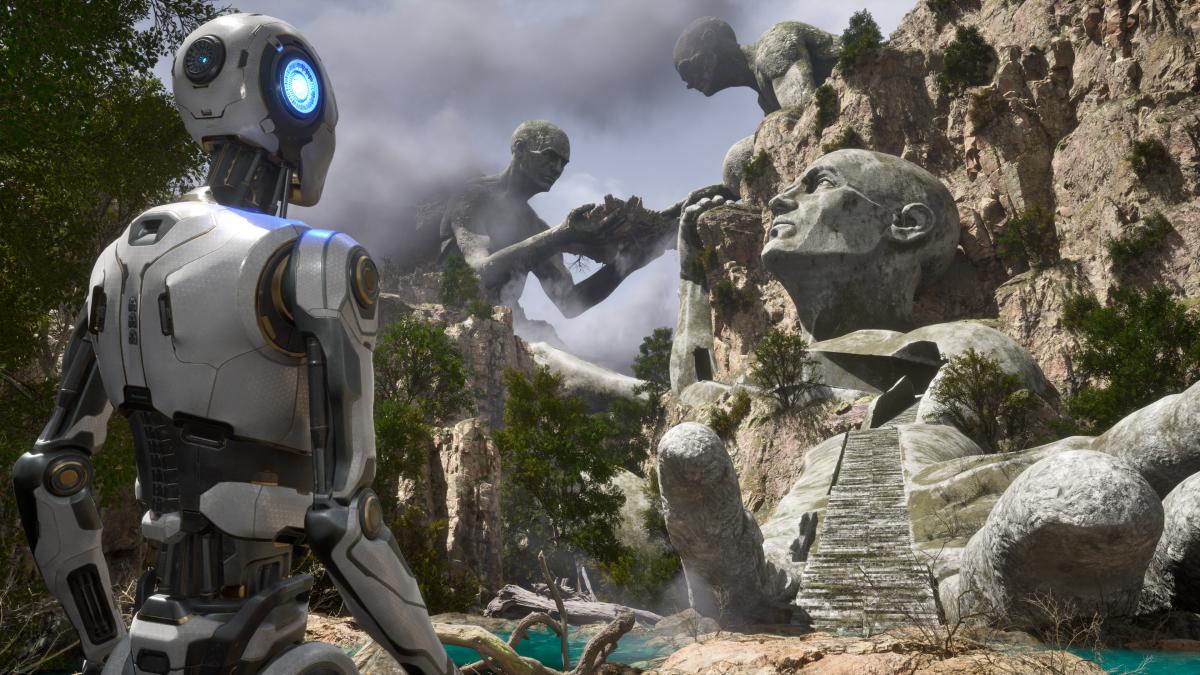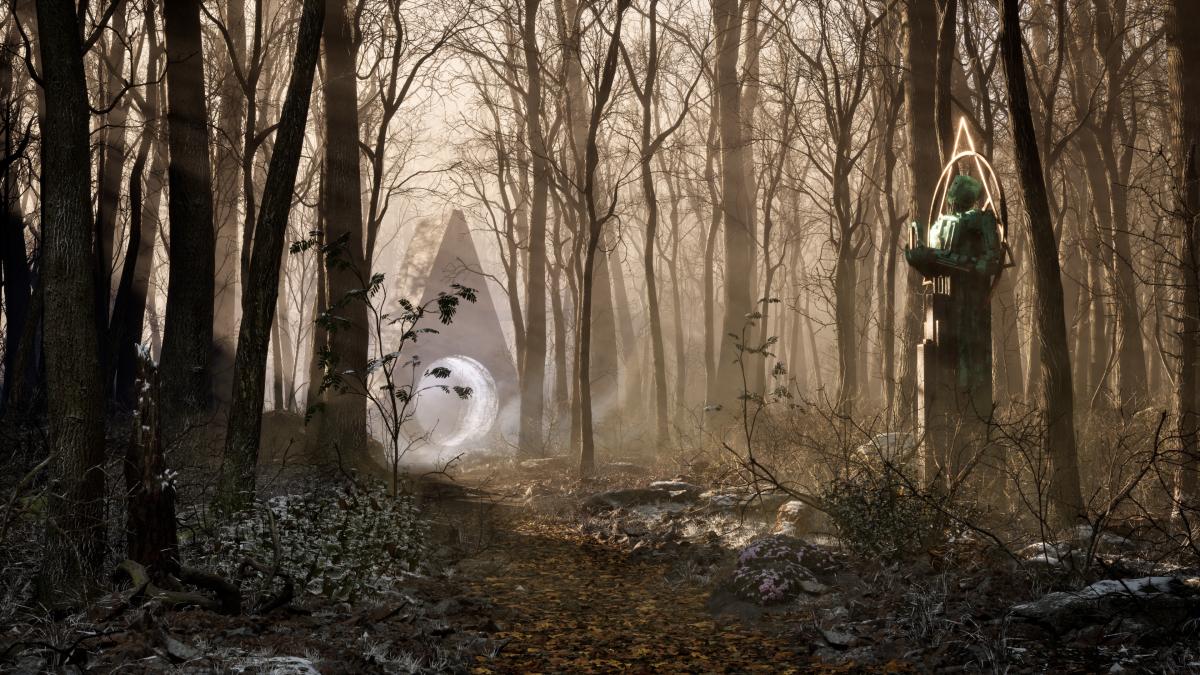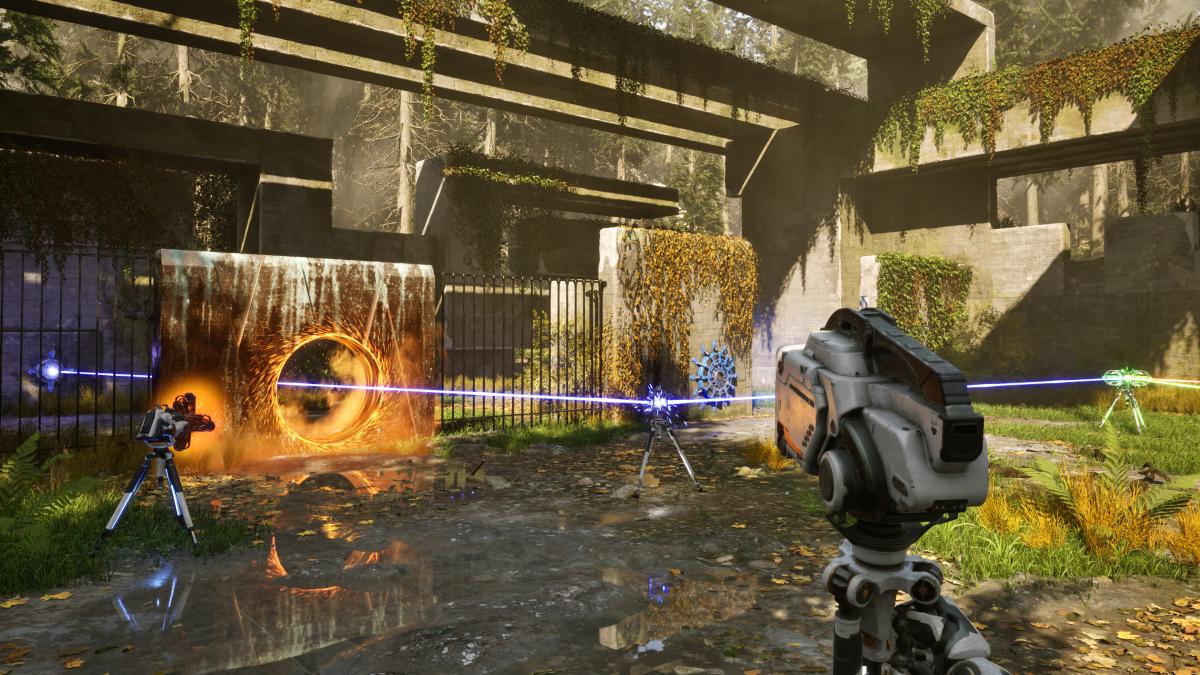The Talos Principle 2 review: a genius puzzle game that won't shut up

I’ve never been one for philosophy. Start talking to me about the nature of life and the meaning of consciousness and I just switch right off, even when it’s highly intelligent and interesting people talking about it. So, it’s safe to say that I wasn’t impressed with The Talos Principle 2’s middle-school essay philosophizing.
The first game went down this route too, but it was more constrained and didn’t weave itself into the gameplay quite as much. This sequel drops all pretense though, and has characters outright spout this stuff directly into your face and then ask you what you think – often throwing upwards of six possible dialogue responses your way.

Giving players this level of nuance in their responses is good for these kinds of conversations, but I don’t think any part of the narrative is well-written enough to justify it. When you reach certain points in the story these strange apparitions will appear and tell you old fables like the story of Pandora’s box, or Icarus’ wax wings and then ask you what you think, which isn’t nearly as clever as the game seems to think it is.
It’s very self-indulgent about these moments too, having characters talk down to you at every opportunity and often pretend that they’ve pulled you into some philosophical trap. The problem is that they always use the same trick, which is to turn around and say “What if the moral of this story is actually the opposite of what is generally accepted?” which, again, isn’t as clever as it wants to be.
The game doesn’t think you’re smart enough to get it either, as all of the characters with you on your journey will ask you the questions the game wants you to ask. It’s this constant background noise of mansplaining as you wander from one puzzle to the next.

That is just one side of the game though. The other side – the actual puzzles – is what drove me to keep pushing through all of the nonsense.
The minds behind The Talos Principle 2 know how to design good puzzles. With the game segmented into different areas, each area features eight main puzzles on one mechanic and one or two extra-hard side puzzles if you’re looking for a challenge. Each one of these puzzles is masterfully constructed, letting you fall into traps and make incorrect assumptions that will eventually lead you to the proper solutions.
What’s more, they’re incredibly well-ordered and paced. Eight puzzles playing with one main mechanic could easily get boring, but each one builds off the last and presents you with a new way to use it, slowly pulling together each idea to create truly fiendish puzzles that feel incredible to solve.

The thing I found most surprising is that there is little-to-no crossover with the puzzle mechanics of the first game. The basic elements are there of course – colored lasers, impassible barriers, refractors – but everything added on top of that is brand new. There are drills to open holes in walls, there are new types of refractors that invert the colors of lasers, and there’s even a green laser this time around, not just red and blue – revolutionary, I know.
The problem is, while I had a great time solving all of these puzzles, I felt like I was doing it without any sense of purpose or direction because I’d long since lost interest in what the narrative was offering me. No matter how mechanically excellent the puzzles are, that feeling eventually drained my motivation to keep pushing onward.
While I appreciate the attempt to take a big step forward into a grander narrative, I think it backfired in a major way, and I would’ve preferred it if the story took more of a back seat. Rather than stand me in front of some apparition while it tells me a long-winded story, it should be delivered more succinctly, teasing what’s behind the curtain rather than outright showing and telling what it is – it worked for the first game, after all.

It leaves me in a position where, when I reflect on my time with the game, the memories of satisfying triumph over many tough puzzles are completely overwritten by my annoyance and boredom at a story that fundamentally fails at what it set out to do, and yet is such a huge part of the experience.
If you’re just in this for the puzzles, then The Talos Principle 2 is a fantastic puzzle game that, despite its difficulty, carefully crafts itself to be accessible to everyone with innovative mechanics that all interlink in ways that will keep surprising you. Taking the game as a whole package though, the narrative greatly drags it down both in terms of the quality of the writing and how it’s implemented as part of the experience.
Score: 7/10
Version tested: PC (Steam)
- Visuals: 8/10
- Story: 4/10
- Gameplay: 9/10
- Performance: 7/10
The Talos Principle 2 technical breakdown
While The Talos Principle 2 mostly holds up okay, when running around the pretty environments between levels the frame rate drops below 30fps quite often. During puzzles it’s usually fine, but when you’re trying to cover large distances at speed – like during the extended exploration sections – it can start to chug.
I also experienced several crashes during my time with it, and as far as I could tell there wasn’t anything consistent that was causing it – it just happened sometimes. Thankfully the checkpoint system is very generous, and while it is frustrating to have to start a puzzle again, it’s not that hard to remember what you’ve already done.
